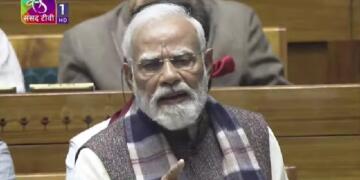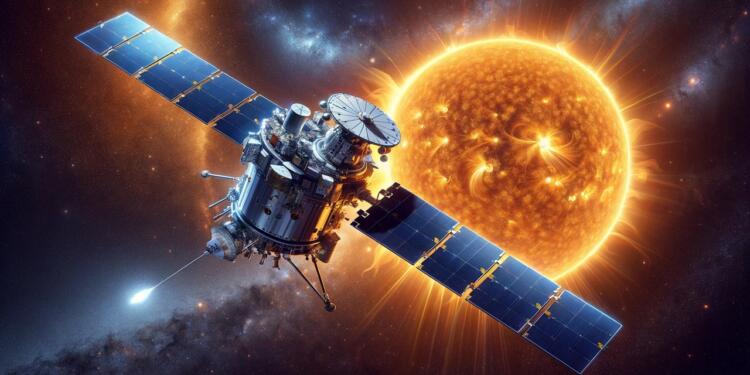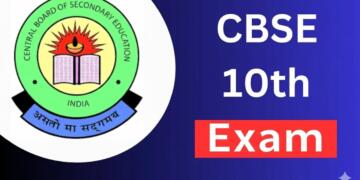The first solar observatory in India, Aditya-L1, was successfully launched into its intended final orbit, from which it will observe the Sun for the remainder of five years.
One of the five spots in the Earth-Sun system where their gravitational pull nearly cancels each other out is Lagrange Point 1, where Aditya-L1 was successfully inserted. A spacecraft can park here and observe the Sun in a reasonably stable position.
Background
In January 2008, the Advisory Committee for Space Sciences (ADCOS) conceived of the mission. In the beginning, it was intended to be a small, 400 kg (880 lb) satellite equipped with a coronagraph for observing the surface of the sun in an 800 km Low Earth Orbit. For the 2016–17 fiscal year, ₹3 crore was set aside as an experimental budget. The mission was renamed “Aditya-L1” because its scope has since been extended and it is now an extensive solar and space-based observatory that will be located at Lagrange point 1 (L1). With launch costs excluded, the mission’s allocated cost as of July 2019 is ₹378 crores.
Objective of the mission
- Investigation of dynamics in the solar upper atmosphere (corona and chromosphere).
- Investigation of flares, physics of the partially ionized plasma, chromospheric and coronal heating, and the start of coronal mass ejections
- Examine the in-situ plasma and particle environment, which offers information for researching particle dynamics from the Sun.
- The solar corona’s heating mechanism and physics.
- Coronal and coronal loop plasma diagnostics: density, velocity, and temperature.
- The evolution, dynamics, and source of CMEs.
- Determine which series of events at the chromosphere, base, and extended corona occur first and ultimately result in solar eruptions.
- Magnetic field measurements in the solar corona and magnetic field topology.
- Space weather drivers include the solar wind’s dynamics, composition, and origin.
Aditya L-1: Pride of India
On the evening of January 6, India achieved another milestone in space exploration with the successful deployment of the Aditya-L1 spacecraft into orbit around the L1 Lagrange point. The meticulously orchestrated manoeuvres, guided by a stream of commands from the Indian Space Research Organisation (ISRO), positioned Aditya-L1 1.5 million kilometres from Earth in the Earth-Sun direction. Because of its unique gravitational dynamics, this Lagrange point was chosen to ensure that Aditya-L1 remains in position with minimal fuel consumption.
Aditya-L1, a solar observatory-class mission, represents a significant advancement in India’s longstanding tradition of solar observation, which dates back to the establishment of the Kodaikanal Solar Observatory in 1901. The spacecraft is outfitted with seven sophisticated instruments, each of which serves a specific purpose in unravelling the sun’s mysteries. VELC, a coronagraph designed to study the sun’s upper atmosphere, SUIT, an ultraviolet imaging telescope, and SoLEXS and HEL1OS, designed to study solar flares and coronal mass ejections, are among these instruments. ASPEX and PAPA are dedicated to studying solar wind and plasma, respectively, and a suite of digital magnetometers for measuring the magnetic field around the spacecraft.
Aditya-L1’s strategic location at the L1 Lagrange point provides it with a clear panorama of the sun, paving the way for a five-year scientific mission. The journey of the spacecraft into space is consistent with India’s commitment to pushing the boundaries of space exploration and scientific inquiry.
It is critical to understand Aditya-L1’s larger context within the landscape of global space endeavours. While comparisons to the James Webb Space Telescope, which is operated collaboratively by three space agencies, are inevitable, it is critical to recognize each mission’s unique contributions. Aditya-L1 and its predecessors, such as the XPoSat and AstroSat missions, demonstrate the growing space exploration prowess of India.
Nevertheless, the public’s opinion remains an important aspect of these accomplishments. The public must be informed about and involved in ISRO’s scientific endeavours. ISRO could improve its public outreach initiatives, possibly organizing open days focused on specific missions and regularly sharing new findings through effective science communication channels, to bridge this gap. Such efforts, while requiring financial support, have the potential to strengthen the connection between the space agency and the general public, fostering a shared sense of pride in India’s achievements.
The successful launch of Aditya-L1 into orbit demonstrates India’s dedication to advancing space exploration. As the country continues to soar to new heights, it is critical to raise public awareness and enthusiasm, ensuring that the nation’s collective achievements in space are celebrated by all. These endeavours can be facilitated with the government’s support, strengthening India’s position on the global stage of space exploration.































